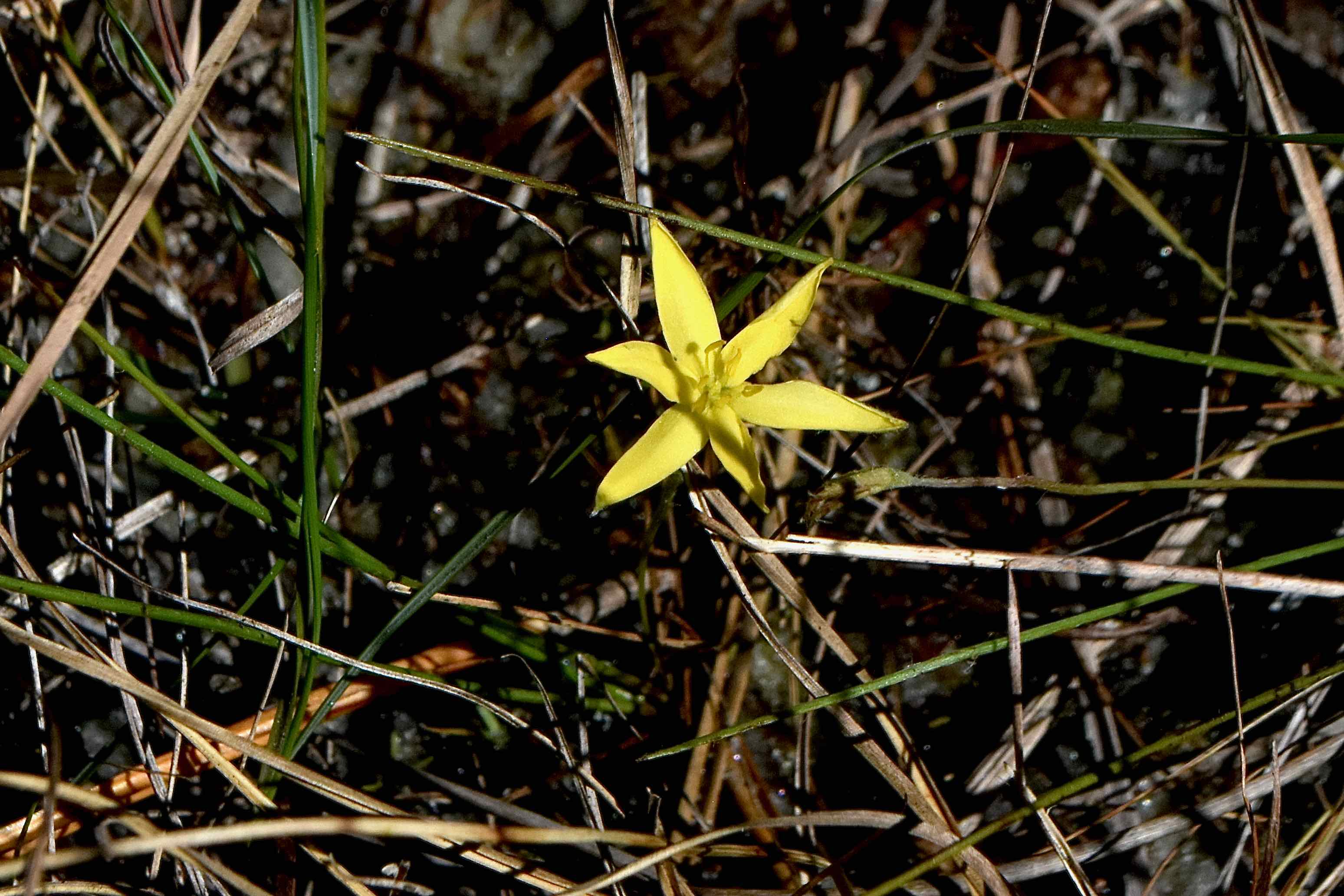
Fringed yellow star grass, photographed at Jonathan Dickinson State Park, Hobe Sound, Marting County, in November 2021.
You can call fringed yellow star grass “slight” or you can called it "spindly". Either one might overstate its size. It is a wisp of a plant.
But its bright yellow flowers punch well above their weight class, so to speak.
Fringed yellow star grass, Hypoxis juncea, is a Florida native found throughout most of the Sunshine State. The Institute for Regional Conservation considers it rare in South Florida; it is absent altogether from Broward, Miami-Dade and Monroe counties.
It’s also found along the Atlantic and Gulf coastal plains from North Carolina to Alabama.
First thing to know: despite the common name, it is not a grass. The leaves of fringed yellow star grass are grass- or wire-like — thin, less than a millimeter in diameter, stiff, mostly smooth — there might be a few hairs at the base — and simple. The plant can stand between six and 12 inches tall, but often lies almost prone along the ground. When not in bloom, it’s hard to distinguish it from its neighbors, but when the blooms present, it’s impossible to miss.
The flowers are large in relation to the modest size of the plant, three-quarters to about an inch in diameter, star-shaped, with six yellow petals and six orange stamen. Fringed yellow star grass blooms year round, but most commonly in the spring.
The plant produces only one flower at a time, but it can put out multiple flowers during the course of the year. It will bloom more intensely after a burn, though the reasons for this aren’t completely understood.
Fringed yellow star grass is a perennial, but it goes dormant and dies back to the ground in early winter, but only for a short time.
Plants of the Hypoxis genus are known for their medicinal properties, particularly in Africa, where they’re used to treat the symptoms of AIDS. There has been some scientific research done on the chemicals produced by these plants, both in the test tube and in animals, and with some promising results.
However, were not aware of any uses for, or studies of our guy, fringed yellow star grass, perhaps because of its relative rareness.
Fringed yellow star grass has a small tuber-like root called a corm. With its grass-like leaves, it was once classified as a member of Iridaceae, the iris family, and you’ll see some references who still include there. However, its current “accepted” classification is as a member of Hypoxidaceae.
Other common names and spellings: fringed yellow star-grass and grassleaf yellow stargrass. Note: yellow star grass is also used as the common name for other plants in Hypoxis genus, particularly H hirsuta.
Jonathan Dickinson State Park



